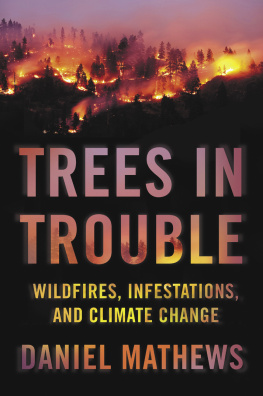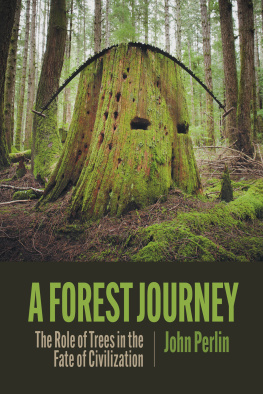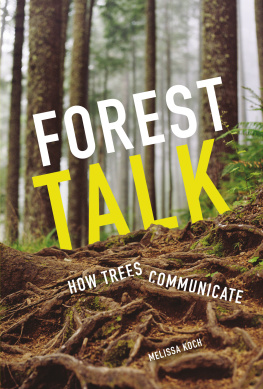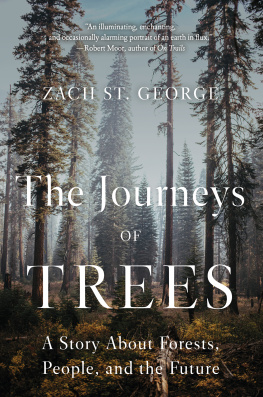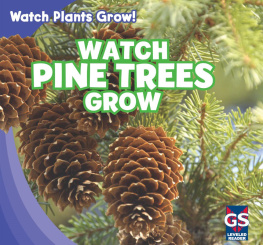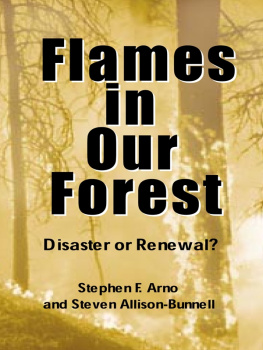
ALSO BY DANIEL MATHEWS
Cascade-Olympic Natural History: A Trailside Reference
Natural History of Pacific Northwest Mountains: A Timber Press Field Guide
Rocky Mountain Natural History: Grand Teton to Jasper
IN COLLABORATION
National Audubon Society Field Guide to the Rocky Mountain States
National Audubon Society Field Guide to the Pacific Northwest
National Wildlife Federation Field Guide to Trees of North America
America from the Air: A Guide to the Landscape Along Your Route with James S. Jackson

Trees in Trouble
Copyright 2020 by Daniel Mathews
First hardcover edition: 2020
All rights reserved under International and Pan-American Copyright Conventions. No part of this book may be used or reproduced in any manner whatsoever without written permission from the publisher, except in the case of brief quotations embodied in critical articles and reviews.
Library of Congress Cataloging-in-Publication Data
Names: Mathews, Daniel, 1948 author.
Title: Trees in trouble : wildfires, infestations, and climate change / Daniel Mathews.
Description: Berkeley, California : Counterpoint Press, [2020] | Includes bibliographical references and index.
Identifiers: LCCN 2019017930 | ISBN 9781640091351 (alk. paper)
Subjects: LCSH: Forest healthWest (U.S.) | TreesWest (U.S.) | Forests and forestryWest (U.S.) | Forest firesWest (U.S.)Prevention and control. | Forest monitoringWest (U.S.)
Classification: LCC SB763.W38 M38 2020 | DDC 634.90978dc23
LC record available at https://lccn.loc.gov/2019017930
Jacket design by Jenny Carrow
Book design by Jordan Koluch
Illustrations by Matt Strieby
COUNTERPOINT
2560 Ninth Street, Suite 318
Berkeley, CA 94710
www.counterpointpress.com
Printed in the United States of America
Distributed by Publishers Group West
10 9 8 7 6 5 4 3 2 1
This book is for the standing people,
that people walking among them
may know and honor them.
Contents

Gary and Lew are sitting by the firedeep in the Sierra. Lew says, You think rocks pay the trees any mind? I dont know, says Gary. What are you getting at? Well, says Lew, the treestheyre just passing through.
LEW WELCH AND GARY SNYDER, AS TOLD BY BILL YAKE
I n western North America there are living pine trees older than the Egyptian pyramids. They survived through millennia of relatively stable climate. Its different now: in our lifetime we will see many trees just passing through. Groves where we sought refuge will themselves be refugees. Some tree species will disappear locally or regionally. Some forestland will turn into grassland, chaparral, sagebrush, or weedy wasteland. The forests of 2050, on a great many sites, will barely resemble the forests of 1950. Some of these transformations are already happening. In one-third of the low-elevation pine forest area in the U.S. Rocky Mountains that has burned in wildfire in this century, new conifer seedlings are failing to show up.
Climate change, in concert with pests, pathogens, and decades of misconceived fire suppression, is causing these sweeping changes. But there are actions we can take to limit the damage. This is a book for everyone who cares what happens to these trees, groves, and landscapes.
The book focuses on pinestwo dozen species that stand as living emblems of the North American West. Growing in different elevation zones and employing utterly different adaptive strategies, they face a variety of threats today. In different ways, the threats are all affected by a warmer, effectively drier climate and a consequent resurgence of bigger, fiercer fire.
Seeing smoke, charcoal, and rust-colored vistas of the dying and dead, many people are upset. Few understand that human choices continue to play strong roles in the fate of these landscapesand Im not just talking about halting climate change. There are better ways to treat our forests and to live our lives around them. Public discussion of forest issues is dominated by simplifications (e.g., the forests are all sick because they grew too dense or because they havent been managed) that interest groups and politicians hijack and build into myths and blame games. Most of our forests have in fact been managed, and it hasnt made them less vulnerable to drought, insect pests, diseases, and fire.
Scores of forest scientistsmany of whom I visit at field sites in the course of this bookare out there figuring out how the forests work, why they are not working so well today, and what management practices hold the most promise. There is a middle ground in between clear-cut logging and just shutting our eyes and hoping. Chainsaws can be tools of intelligent forestry.
Forest stewardship once held a place near the core of Americas vision of itself. Tourism, skiing, and vacation homes all descend disproportionately on the Wests pine country. Trees are essential to the image of most of our national parks. Three national parks were established to protect groves of the three tree species that rank as the worlds biggest, tallest, and oldest.
But neither leaving lands untouched within national parks and wilderness areas nor developing boutique neighborhoods protects trees from climate chaos. The challenge is enormous; to meet it is crucial. The question is not whether forestry can restore the status quo of 1870 or even of 2000it cannotbut how it can influence forests for the better. If we treat our forests right, we can at least ameliorate the declines in forest extent and diversity and the consequent impoverishment of the aesthetic, economic, climatic, and spiritual benefits we count on from them.
Like most of the forest ecologists I have met (and like me), Nate Stephenson initially got into this line of work because he loves mountains, forests, and backpacking. He loves backpacking so much that he doesnt even go away for his vacation every summer; he just goes backpacking right there in the national parks where he worksSequoia and Kings Canyon. Like several other scientists hammered by shocking losses of trees in the terrain they know and love best, he doesnt waste time wallowing in the heartbreak. Much of his focus is on the amazement and scientific interest in finding himself in the middle of unexpected ecological transformation. This is giving us hints of what we might see happen in the future, so were just trying to learn as much as possible from it.
At the same time, Stephenson does want to send out an alarm right now:
More and more, what worries me is that the changes were going to see are going to be traumatic and sudden. People have a tendency to think overall the temperature is rising slowly, so overall the changes in the ecosystems will be slow. I think were getting better and better evidenceand pines are a prime example of thatthat no, your changes might be extremely abrupt. Is there a way that we might ease that transition more? Rather than having it be really abrupt and suddenly theres no habitat left for a lot of forest-dependent creatures, and you get erosion, and you just lose a lot of what forests do for you. Can we anticipate that and actually start easing the transition ahead of time?

Next page
